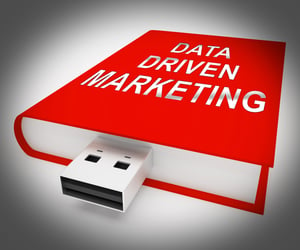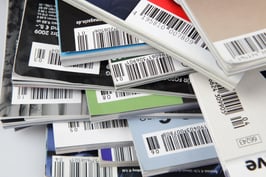Today, the most effective marketing programs are fueled by data, which can be an anxious topic for creative people. It doesn’t have to be. Learning some basics about data is all it takes to leverage the power of data and avoid mistakes that result in re-working the design.
Why is data important?
When it’s used properly, data can increase customer engagement and responses. The more you know about your recipients, and can use that knowledge to drive the images, text, and offers, the better you can create meaningful communications. A customers’ shopping history, for example, can predict their interest in future purchases and allow you to design interesting offers to which they are more likely to respond.
Even the most basic information about your targets such as location, gender, and age can make a big difference, turning a generic campaign into one that is personalized.
How can data help my design and marketing projects?
When you have accumulated enough data about your audience, you can segment them into groups that share characteristics. By analyzing and synthesizing bits of data, you can create programs that target each of the groups differently.
Let’s say you’ve separated the audience by age and gender. You might design pieces featuring photos of people in the same sex and age as the group members, even if the product and offer are the same for everyone. Or, you can make different pitches to each of those groups that resonate more precisely with them based on other data you’ve gathered.
At the next level, you can create individually personalized pieces. With today’s printing technology you can create highly personalized and targeted marketing pieces. Designers can change almost all elements on each sheet that comes off the press, including fonts, text, images, graphics, and positioning. Several studies have proven variable data printing (VDP) increases recipient engagement.

What data should I seek?
Ask the IT people to collect any piece of information you feel is crucial for understanding the client relationship and creating relevant programs. This may include individual buying histories, engagement histories, demographic data, complaints, and so forth. Focus on information that will help sell the product or service. Work backwards by thinking about what you want to achieve, then consider the information you need to reach your goals.
Before deciding to use data explicitly, make sure the data is current, accurate, and consistently formatted. Sloppy personalization will kill your campaign quickly. Has IT cleansed the data so some records aren’t listed as Dave Smith and others as Smith, Dave? Investigating the state of the data in advance influences how you set up and deploy data.
It’s best to let the data determine how to design a piece, rather than doing all the design work only to find the data won’t support it.
How do I organize the data files?
Follow a basic spreadsheet setup. Each row of information in a spreadsheet of data corresponds to a different art file, while each column represents a field corresponding to a space on the artwork.
Use a simple and consistent naming system for the columns, such as first name, last name, address, city, image one, image two, and place the name of the images in the proper columns. Use the exact name of each image. You can use .jpg, .esp, or .tif extensions. Designers can include variable text in the spreadsheet to correspond to its position on the artwork. More complex variable documents may require VDP applications that can work with a relational database, extract the data, and compose the documents.

Pay attention to requirements regarding fonts, size and resolution for images, image formats, size of text fields, or how to use special items like barcodes or QR codes. The IT team or print service providers may relate specifications necessary for taking advantage of favorable pre-sorted postal rates.
What printing technology is used for variable data printing?
Variable data printing is done on highly advanced digital or inkjet presses. Traditional offset presses cannot print variable documents, though some shops use hybrid presses that apply variable data to offset pages as a second operation. Take advantage of the economies of VDP to design materials that appeal to the different segments of your audience. You’ll notice an improvement in response over a “one-size-fits-all” approach.
Data requires a small effort to master properly, but it produces proven results. 
A version of this article was originally published on 06-22-2020 at:
https://colorkarma.com/featured-articles/what-designers-should-know-about-data/
+

